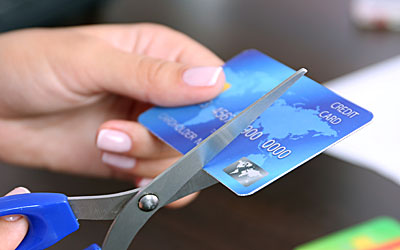Bankruptcy Articles
Rebuilding Your Credit After Bankruptcy
It is nearly impossible to live a normal life today without having at least some type of credit available. The bankruptcy laws were enacted largely to give Americans without credit a fresh start. Many bankruptcy filers are surprised to find that their credit scores actually improve simply because their debts have been wiped out in bankruptcy. Even though a bankruptcy will stay on your credit report for ten years your credit score should improve immediately after you file.
Within the first couple months of filing you will start to receive credit card offers from companies that used to decline your requests for credit. Within two years of filing, government mortgage lenders are required to offer you the same rates of interest as anyone else, so long as you’ve paid your debts in a timely manner after bankruptcy. Because you can only file chapter 7 every eight years, many lenders will regard you as being a better credit risk.
The idea is to file once and to straighten out your financial life so that you won’t have to ever file again. Here are some tips on how to rebuild your credit:
a. Apply for gas credit cards and store cards at businesses wherein you would normally just pay in cash.
b. Apply for a secured card where you deposit cash and charge against it. Pay advances back over two months so that they will be reflected as positive marks on your credit report.
c. Find a friend or relative to cosign for you on a loan and pay it on time.
d. Look for mortgage brokers and car dealers that hold themselves out as “bankruptcy friendly.” Try and purchase a used car so you do not get hit with the depreciation that occurs during the first two years.
e. Stay away from payday loans that are at high interest rates and are a “bad credit” trap.
f. Write a letter to each credit reporting agency to explain the circumstances that caused you to file. You are entitled to put a statement into your credit report that explains why you were forced to file. If circumstances beyond your control were the cause then these facts should be listed on your credit report.
g. Open a savings or checking account. Many lenders may review these accounts to assess if you can responsibly handle money.
h. Live within your means. Remember not to unnecessarily increase your debt to income ratio by taking on credit to purchase luxury items that you DO NOT NEED. Your payments on consumer debt should equal no more than 20% of your disposable income, after costs for housing and a vehicle are taken into consideration.
i. Pay your rent and utility bills in a timely manner for a year.
j. Pay your reaffirmed pre‑bankruptcy obligations on time.
k. Apply for a secured credit card wherein you deposit cash and borrow against it. Do not purchase consumables such as food and gas with a credit card. You want to be able to pay off the purchase before the item is used up.






